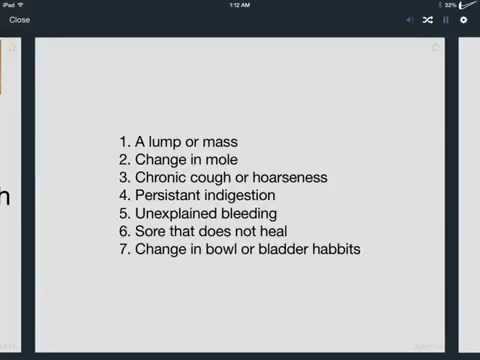How to Qualify as a Medical Assistant
Contents [show]
Are you considering a career in the medical field? If so, you may be wondering how to qualify as a medical assistant Keep reading to learn about the education and training requirements for this rewarding career.
Checkout this video:
Job Description
The position of medical assistant is one that requires a compassionate, detail-oriented individual. Medical assistants are responsible for performing a variety of tasks in order to support the work of physicians and other medical professionals. responsibilities may include greeting patients, scheduling appointments, handling correspondence, taking and recording medical histories and vital statistics, preparing patients for examination, drawing blood, administering medications and performing basic laboratory tests. in addition, Medical Assistants may also be responsible for billing and coding insurance forms.
The position of medical assistant is one that requires a compassionate, detail-oriented individual. medical assistants are responsible for performing a variety of tasks in order to support the work of physicians and other medical professionals. responsibilities may include greeting patients, scheduling appointments, handling correspondence, taking and recording medical histories and vital statistics, preparing patients for examination, drawing blood, administering medications and performing basic laboratory tests. in addition, medical assistants may also be responsible for billing and coding insurance forms. In order to qualify for this position, individuals must have completed an accredited Medical Assistant program and have earned a certificate or diploma. Some employers may prefer or require candidates to have additional certification from professional organizations such as the American Association of Medical Assistants or the National Healthcare Association.
Education and Training
Medical assistants typically complete a postsecondary education program of 1 to 2 years in length. Some states have mandated education and training requirements for MA’s. Although not currently regulated by a federal agency, the industry is moving toward voluntary national certification.
Employment of medical assistants is projected to grow 29 percent from 2019 to 2029, much faster than the average for all occupations. Growth will occur as demand increases for medical assistants in physicians’ offices, especially as medical groups expand their services to include more preventive care and elective procedures.
Certification
The National Healthcare Association (NHA) offers the Certified Clinical Medical Assistant (CCMA) credential. Eligibility requirements for the CCMA include graduating from an accredited medical assisting program and completing a minimum of externship hours.
In order to take the exam, applicants must also submit a completed application form and fee. The CCMA exam consists of 190 multiple-choice questions covering topics such as Medical Terminology anatomy and physiology, patient confidentiality, and infection control.
Successful completion of the CCMA exam allows candidates to use the credential “CCMA” after their name. The credential is valid for five years, at which point recertification is required.
Skills
In order to qualify as a medical assistant, there are a number of skills that you will need to possess. Some of these skills are technical, such as being able to take blood pressure or administer injections. Others are interpersonal, such as being able to deal with difficult patients or provide emotional support to those who are grieving. Here is a complete list of the skills you will need to qualify as a medical assistant:
-The ability to take blood pressure
-The ability to administer injections
-The ability to take vital signs
-The ability to perform EKGs
-The ability to handle patient paperwork
-The ability to deal with difficult patients
-The ability to provide emotional support
-The ability to perform administrative duties
-The ability to maintain confidentiality
Salary and Job Outlook
Medical assistants make a median salary of $36,610 per year, or $17.64 per hour, as of May 2019, and the job outlook for them is bright, according to the U.S. Bureau of Labor Statistics. They can expect to see a 23% growth in positions between 2019 and 2029, much faster than the average for all occupations. This is primarily due to an aging population and the expanded use of medical services by this group.
Career Paths
Medical assistants are professionals who support the work of physicians and other health care providers. They perform a variety of administrative and clinical tasks.
To qualify for most positions, medical assistants need to have completed a medical assisting program and obtained certification from an accredited body. Some states have certification requirements for medical assistants.
There are many ways to become a medical assistant. Some people enter the profession with a high school diploma or equivalent, while others have completed postsecondary education programs.
Those who have completed a medical assistant program at a community college, trade school, or technical school will generally have the best job prospects. Many employers prefer to hire candidates who have earned nationally recognized certifications, such as the Certified Medical Assistant (CMA) credential offered by the American Association of Medical Assistants (AAMA).
Working Conditions
Medical assistants work in a variety of settings, including physician’s offices, clinics, hospitals and other healthcare facilities. They typically work Monday through Friday during regular business hours, although some positions may require evening or weekend hours. Many medical assistants have flexible job schedules that allow them to work part time.
Job Satisfaction
Job satisfaction is often described as how happy someone is with their job. It is important to medical assistants, as they are often the ones in contact with patients and their families. There are many factors that contribute to job satisfaction, such as the work environment, compensation, and other factors.
Pros and Cons
There are many reasons why people choose to become medical assistants. Some enjoy working with patients and appreciate the satisfaction that comes with helping others. Others enjoy the challenges and variety that a career in healthcare presents. However, it’s important to be aware of the pros and cons of this career before making a decision.
Pros:
-Moderate pay
-Good job security
-Can be satisfying work
-Can lead to other opportunities in healthcare
Cons:
-May have to work long hours
-May have to work evenings or weekends
-May deal with stressful situations
Q&A
1. What is a medical assistant?
A medical assistant is a healthcare professional who assists doctors and other medical staff with patient care, clinical tasks, and administrative duties.
2. What are the responsibilities of a medical assistant?
The responsibilities of a medical assistant may vary depending on the specific job and workplace, but generally include tasks such as taking patient histories and vital signs, preparing patients for exams, assisting with procedures, scheduling appointments, and handling basic office administrative duties.
3. What educational requirements are needed to become a medical assistant?
Most medical assistants have at least a high school diploma or equivalent, although some jobs may require postsecondary education or formal training. Many medical assistants also choose to earn certification from an accredited organization such as the American Association of Medical Assistants (AAMA).
4. How can I find a job as a medical assistant?
There are several ways to find job openings for medical assistants. You can search online job boards, contact local hospitals or clinics directly, or use professional networking sites like LinkedIn to connect with potential employers.







